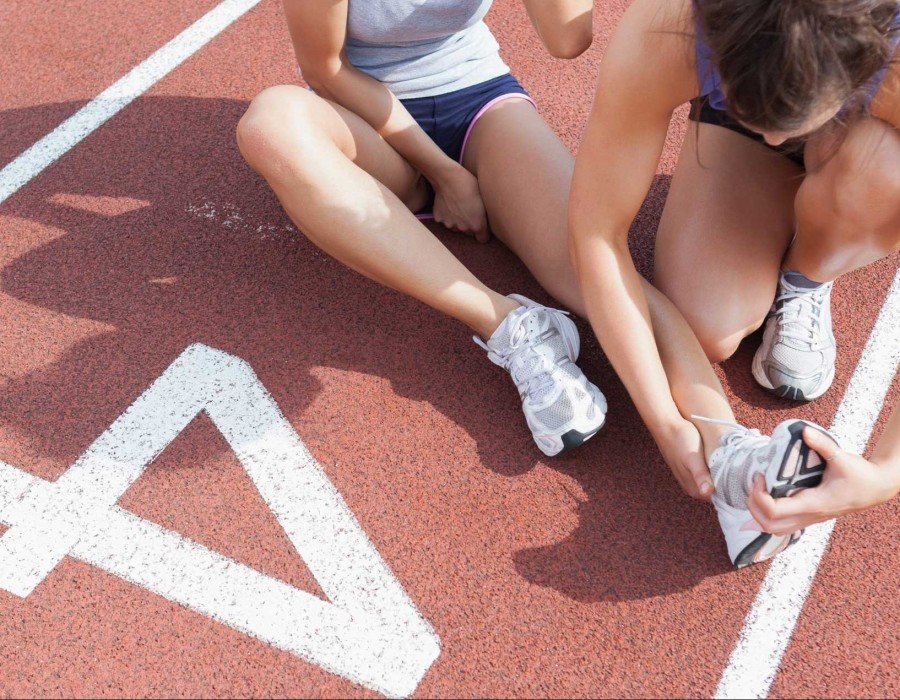Health and Wellbeing
Achilles Tendinitis – Healing the Achilles Heel

What is Achilles tendinopathy?
The Achilles is the tendon found at the bottom of the calf and joins the calf muscles (Gastrocnemius and Soleus) to the heel bone. The Achilles tendon has to tolerate the highest loads in the body – up to 10 times your body weight during running and jumping.
Achilles heel pain is now called Achilles tendinopathy. This is different to tendinitis where inflammatory changes within the tendon can be observed. Instead, there are cellular changes to the tendon and to the arrangement of collagen fibres, as well as its supporting system, the matrix. With Achilles tendinopathy the tendon does not become weak, but it does make it difficult for the Achilles to tolerate loads. Correcting this that is at the heart of treatment.
What are the symptoms?
Classic features of Achilles tendinopathy are the gradual onset of morning stiffness, which may resolve within 5-10 minutes, and stiffness when walking after sitting for long periods. The morning stiffness is often worse on days after a run. The pain/stiffness will typically “warm-up” during the first 5-10 minutes of a run. This often means people don’t seek help as they can initially run through the pain. But the earlier you seek help, the more likely you will be able to get away with adjusting your load rather than stopping running altogether.
This blog will focus on the treatment of mid-portion Achilles tendinopathy. A diagnosis can be made by a qualified physiotherapist without the need for scans, but sometimes an Ultrasound scan can be beneficial to view the quality of the tendon and guide the treatment program.
What causes Achilles tendinopathy?
There are certain risk factors that may lead some people to develop Achilles tendinopathy, many of which relate to changes in load through the tendon rather than to a person’s biomechanics. More men are affected than women, and it is more common in your 30s or 40s. Some individuals also have a genetic predisposition to developing tendon pain. Other risk factors can include changes to your exercise regime.
There are three questions that should be considered:
- What – Have I changed in my training/exercise in some way e.g. more hilly terrain for running/cycling, increased distance/speed?
- Where – Have I changed where I train e.g. cross country to road running?
- With – Have I changed what I train with e.g new footwear, altered bike set up etc?
How to treat it
Diagnosis can occur at different points: the onset of pain may be quite sudden and a reaction to overload – referred to as a reactive tendinopathy and may be severely painful. Or it might be more chronic (longstanding as opposed to severe) – referred to as tendon disarray or degeneration. The treatment will therefore depend on the individual, but ultimately it involves improving the tendons tolerance to load.
Physiotherapy principles
The key areas that physiotherapy focuses on are as follows:
- Improving how well the tendon tolerates load
- Biomechanical correction
- Manual therapy (Soft tissue and joint mobilisation to relax tight areas within the calf muscles and reduce any stiffness in surrounding joints)
- Strength training and correcting training errors
There may be a need to cut running initially, but the general consensus is that off-loading the tendon for too long is unhelpful. So the ideal is to calculate the amount of running that can be done without affecting the symptoms – which are mostly latent. So morning stiffness following a training day can be a good indication of how the tendon is coping with load.
There is good evidence that slow, heavy load-strength training can improve a tendon’s tolerance to load and this is one of the gold standards for treatment. It is important, though, to avoid overload through other aspects of training while strength training, otherwise it will fail.
While there may also be specific biomechanical factors feeding into the tendinopathy, the research does not point to any common faults leading to problems in the Achilles. So, ideally, each person should have a thorough gait analysis to identify what they need to work on. It may be that their foot position is too rigid, but equally it can relate to overpronation so it is difficult to generalise as these are more or less opposites. It is important for the clinician to consider the whole chain when assessing, including looking at the hips and knees once any spinal involvement has been cleared.
More common than biomechanical problems are training errors. Most people we see present with Achilles tendon problems when they have radically changed their training load. All the evidence points towards load management as the best way to treat Achilles tendinopathy. And it is important to give it time before considering other options – we suggest three to six months. We recommend this because the evidence for more invasive evidence is less clear.
However, if conservative management has failed then these are the more radical options you could consider:
Injections
Different substances used in injections for the treatment of Achilles tendinopathy include:
- Autologous blood (blood taken from you): stimulates a healing process.
- Platelet-rich plasma (centrifuged blood to separate the platelets): stimulates healing.
- Polidocanol: a sclerosant that reduces pain.
- Steroid mixed with saline at high volumes: stripped around the tendon.
Injections around, but not within, the tendon may help, but the research is really lacking. But many are cautious about using steroid near the tendon because of the potential for weakening the surrounding tissue.
Surgery
Surgery should only be considered if conservative interventions have been unsuccessful. There have been quite big advances but surgical options should only be considered with the input of a specialist consultant.
Author: Tom Hampton – Regional Lead Physiotherapist at Bodyset, Birmingham